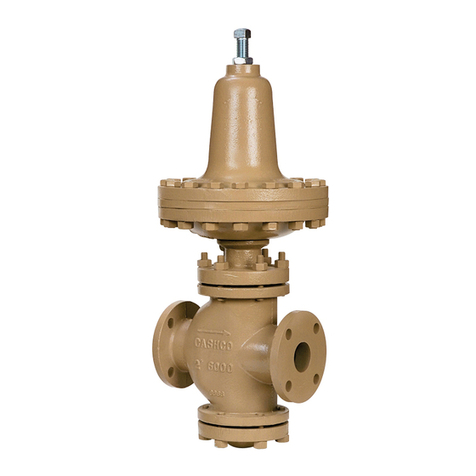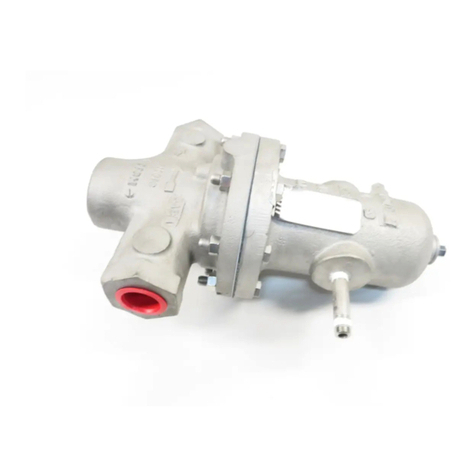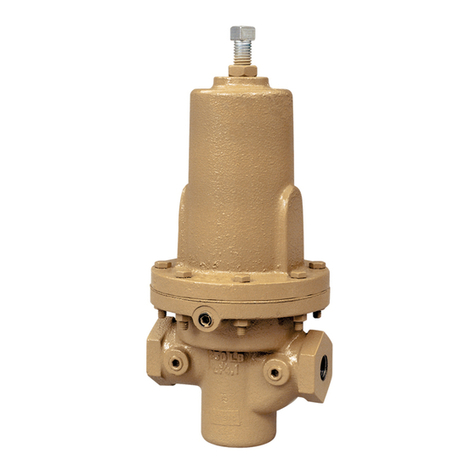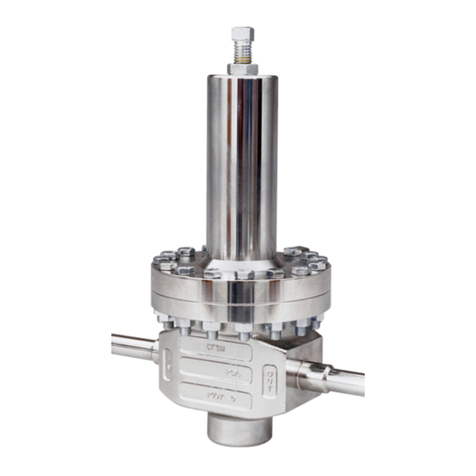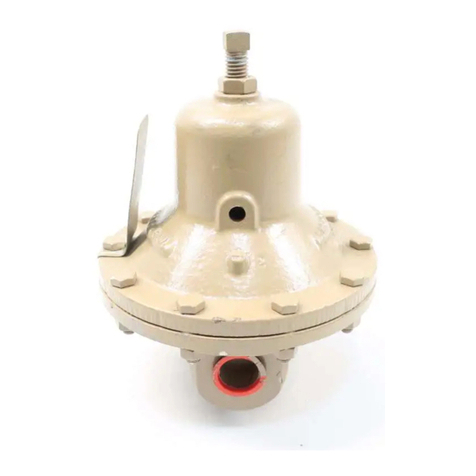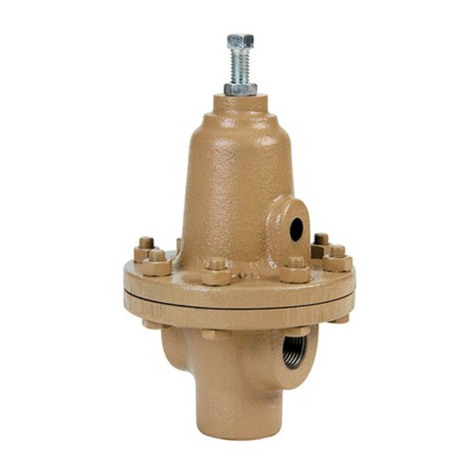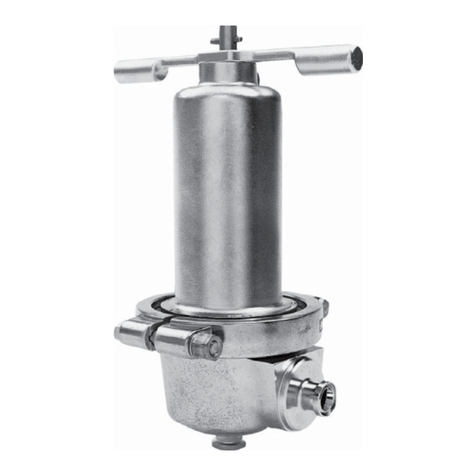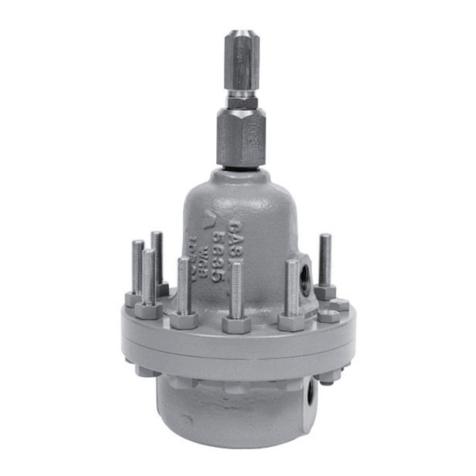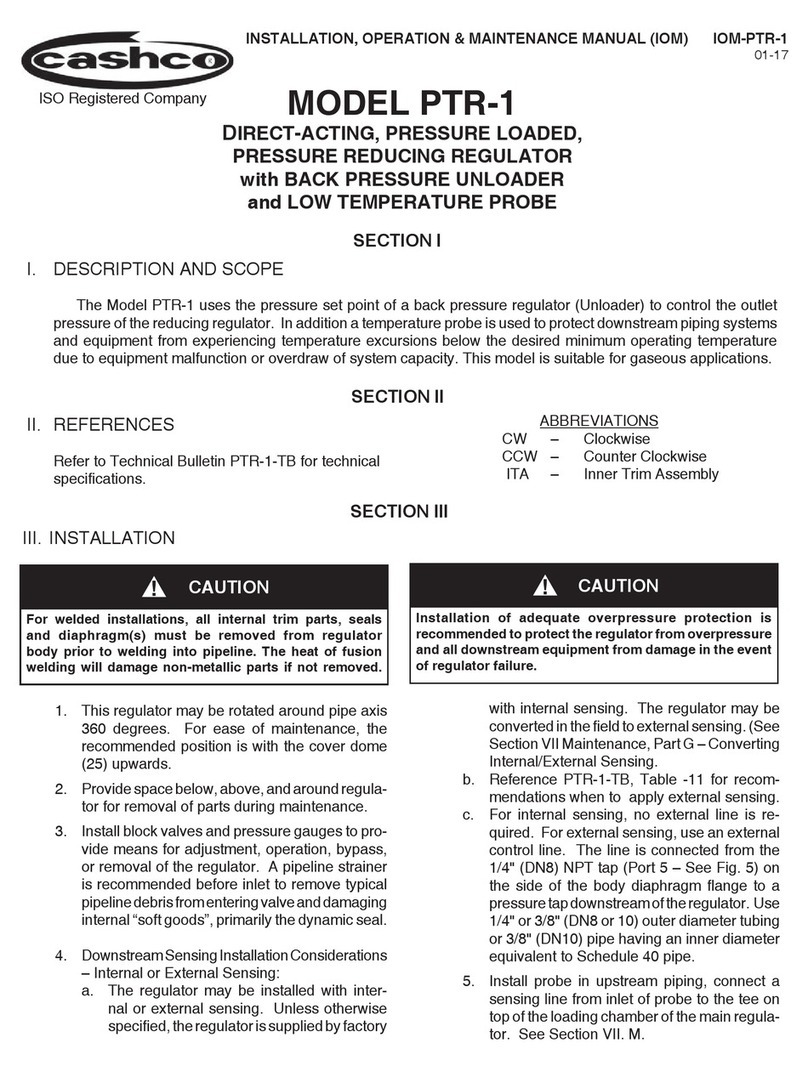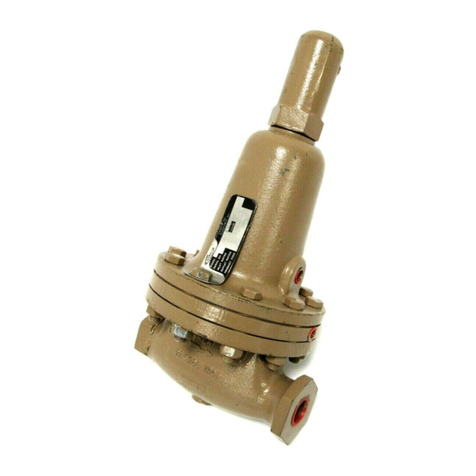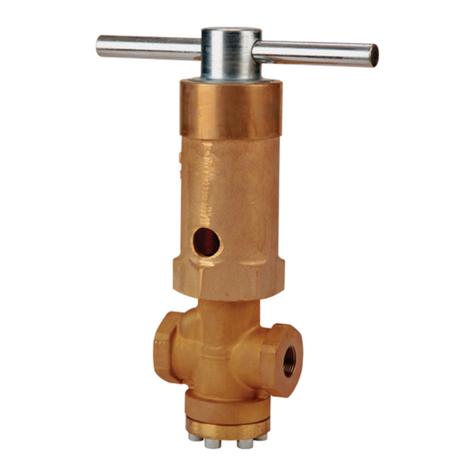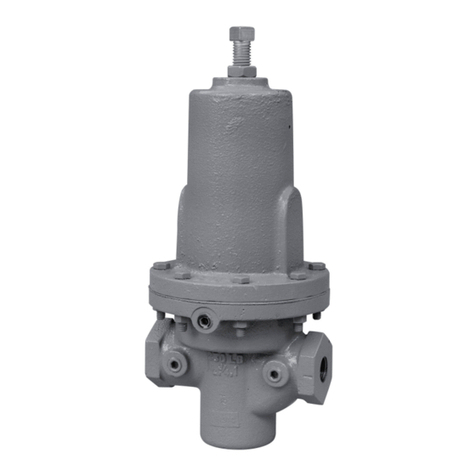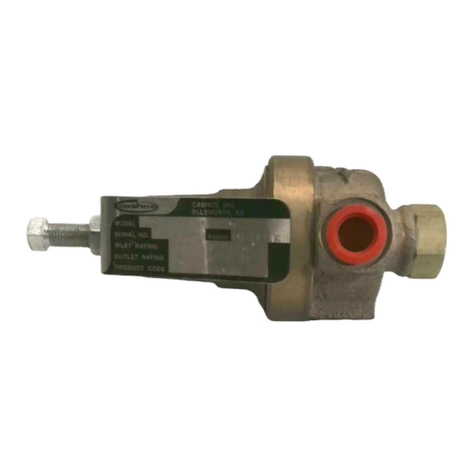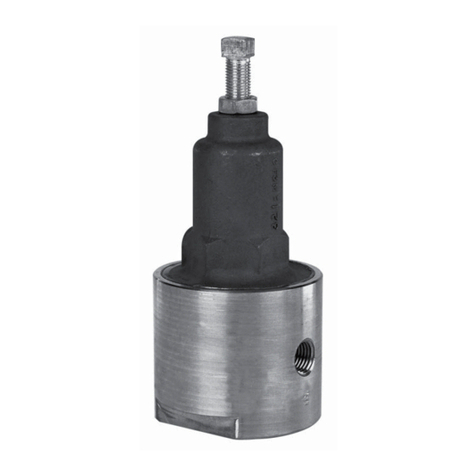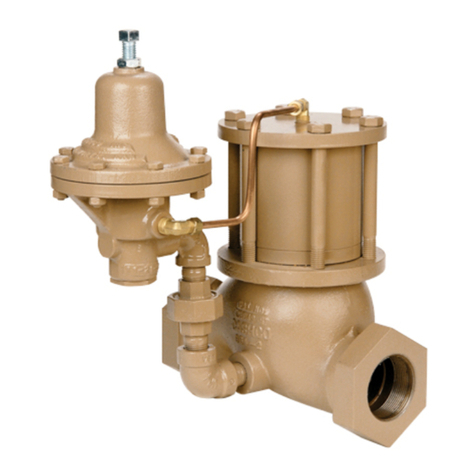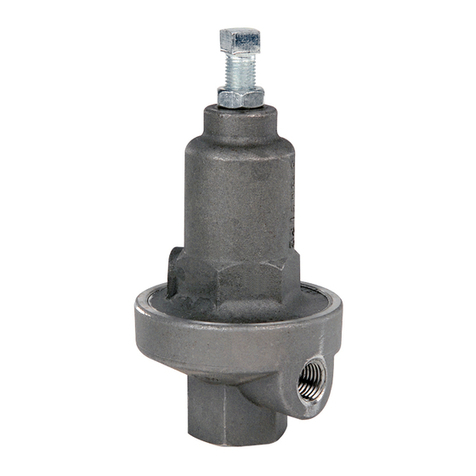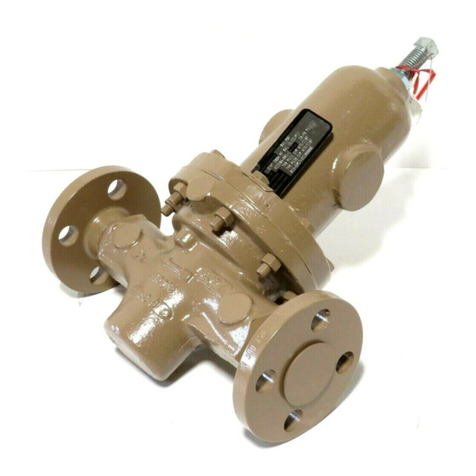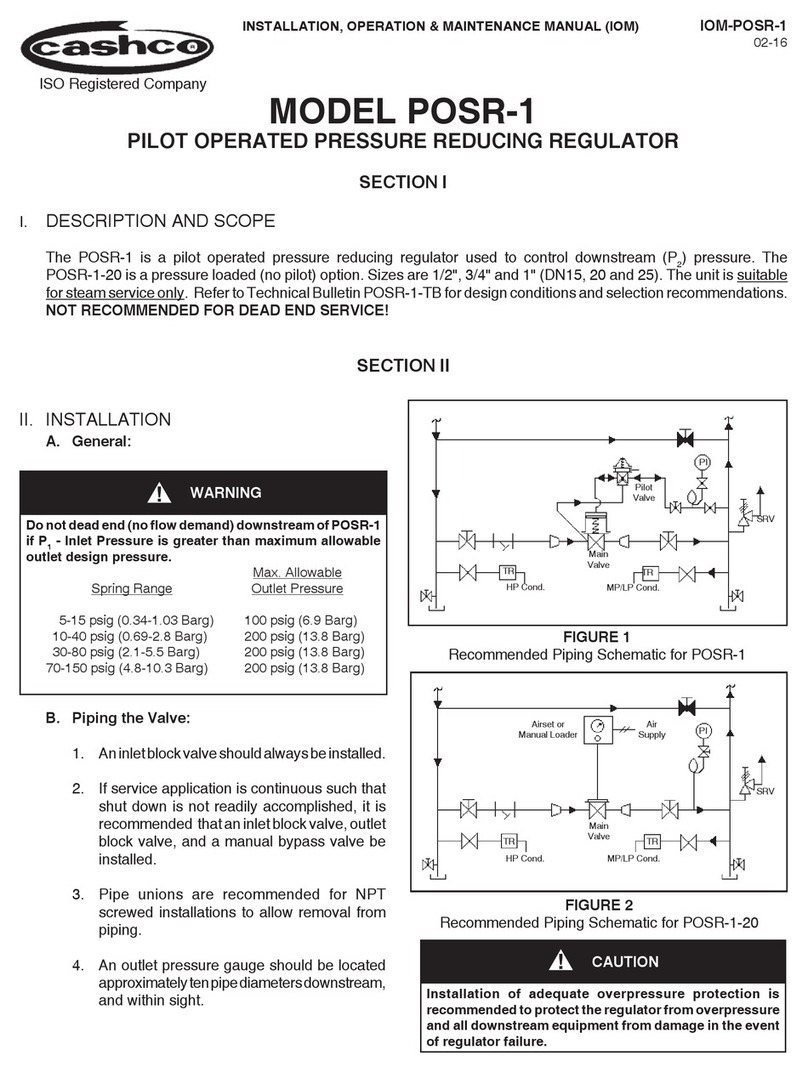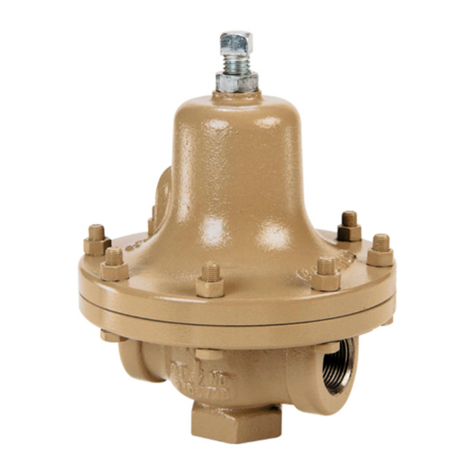
IOM-HP4
E. Special Instructions for Diaphragm Replacement:
1. For the Option -1+6 Differential Construction,
reassemble the diaphragm subassembly in Sub-
Section B. Step 9.
2. For metal diaphragm(s) (12) only, install a second
diaphragm gasket (13) on the top side of the
diaphragm (4). NOTE: Clean the diaphragm flange
area of the spring chamber (2) thoroughly before
assembly.
3. Utilize a new lock nut seal (22) when installing the
adjusting screw (13) and locknut (14).
4. Install new closing cap gasket (21), reinstall closing
cap (20).
D. Trim Replacement (For Composition Seated Units):
Follow the same steps as listed under “Trim
Replacement for Metal Seated Units”, except for the
following guidelines:
1. When inspecting parts for excessive wear (C.3)
ensure there are no foreign particles embedded in
the TFE seat. Inspect for nicks. Inspect the backup
ring (27) and quad ring (26) on piston post.
2. After removing the body cap (5) (C.4), inspect the
inside surface of the body cap for scratches or
nicks. These could result in leakage past the quad
ring (26) and backup ring (27). If worn or scratched
replace the body cap (5).
3. Remove the body cap O-ring (25) and clean
contacting surface of body (1).
C. Trim Replacement (For Metal Seated Units):
1. Install body (1) in a vise with the body cap (5) on
top and the body (1) flange downwards.
2. Loosen body cap (5) with a hex head wrench with
a lever length of at least 15 inches (381 mm). The
wrench should be rapped with a hammer to loosen.
Remove body cap (5).
3. Remove piston spring (17), and piston (15.1) and
cylinder (15.2). Inspect parts for excessive wear,
especially at seat surfaces. Replace if worn, nicked
or depressed.
4. Clean flat mating surfaces of body (1) to body
cap (5) shoulder. Be careful not to scratch either
surface.
5. Clean debris from within the regulator body (1)
cavity. Clean parts to be reused. NOTE: On
regulators originally supplied as "oxygen clean",
Options-55, maintenance must include a level of
cleanliness equal to Cashco's cleaning standard
#S-1134. Contact factory for details.
6. Reinstall a new cylinder gasket (18). Press firmly
and evenly into place using the cylinder (15.2).
Remove the cylinder (15.2) and inspect the
pressed in cylinder gasket (18). Do not use a
“homemade” cylinder gasket. Pipe sealant may
be lightly coated to the gasket surfaces prior to
installation, except when utilizing Option-55.
7. Reinstall the cylinder (15.2), observing that when
finally setting, the cylinder (15.2) appears to be
concentrically located within the body cap (5)
opening.
8. Slide the piston (15.1) slowly into place, ensuring
that the piston (15.1) post slides into the female
groove of the pusher plate (11).
9. Place piston spring (17) into the cavity of the piston
(15.1).
10. Use pipe thread sealant applied to the body cap (5)
threads. Screw body cap (5) into body (1). When
body cap (5) is fully down against body (1) at the
body cap shoulder, use the wrench with 15" (381
mm) lever handle and a hammer to impact the body
cap (5) into the body (1).
11. Bench test for suitable operation. NOTE:
Regulators are not tight shutoff devices. Even if
pressure builds up beyond setpoint, a regulator
may or may not develop bubble tight shutoff. In
general, tighter shutoff can be expected with a
composition seat.
12. Soap solution test around body cap (5) and
body (1) for leakage. Test pressure should be a
minimum of 100 psig (6.9 Barg) at the inlet.
CAUTION
When piston (15) assemblies are used with
compositionseats,Cashco,Inc.doesnotrecommend
attempting to remove the composition seat, as it is
retained by the piston's post being force pressed
into the lower cylinder section, and the outer (OD)
edge of the composition seat is retained by the
piston's thinned wall being forcefully crimped into
the composition seat material (bent over and into). If
composition seat is damaged, replace entire piston
assembly.
CAUTION
Option-1+6containssingle diaphragmconstruction.
In the event of diaphragm failure, the process fluid
will mix with the loading fluid. Please alert your
representative so an alternative product can be
selected.
